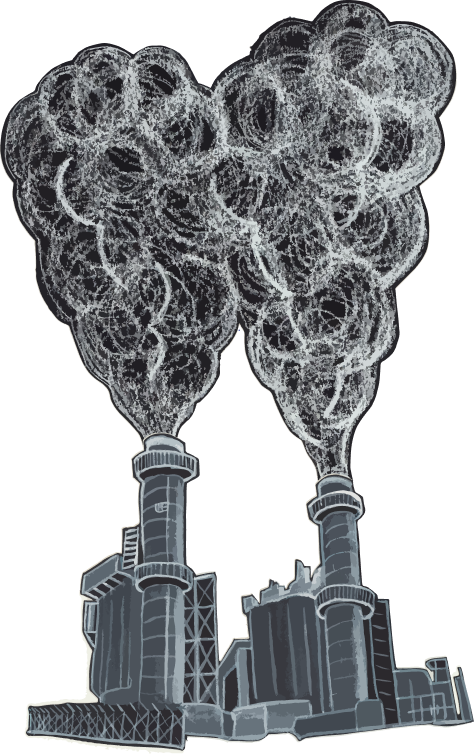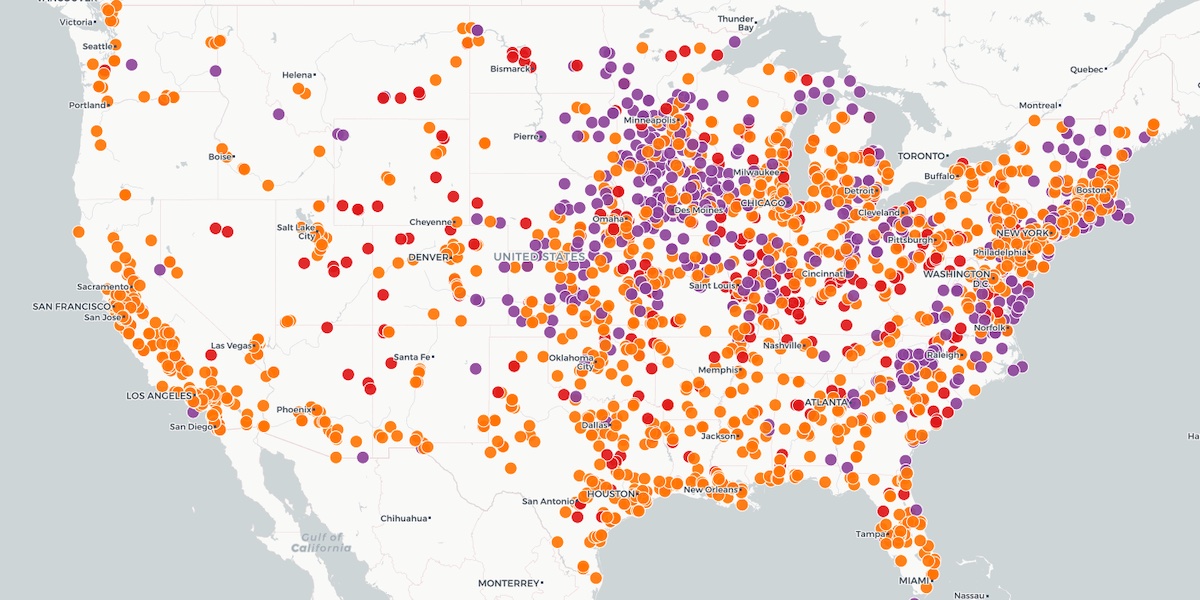South Carolina
Back to mapTo get to zero by 2050, South Carolina must cut emissions by 3.7% a year
Emissions in South Carolina
Million metric tons of carbon dioxide (CO2) [?] equivalent (MTCO2e [?]) emissions
Note: Grey area indicates missing data due to processing delays.
Source: WRI, Mar 2021
This is how we're going to do it
- Boilers and furnaces with heat pumps [?]
- Gas stoves with electric induction stoves [?]
- No-till farming to keep CO2 in the soil
- Capturing methane leaks from landfills
- Capturing CO2 to make emissions-free concrete
- Burning green hydrogen to make emissions-free steel
- Plugging methane leaks from gas pipelines
Decarbonize Our Buildings
5% of South Carolina's climate pollution comes from buildings.
We burn fossil fuels to heat our air, water, and food.
To cut this pollution...
Let's electrify our heat!
We'll replace...
...in all of South Carolina's 2.3 million buildings.
In fact, 66% of appliances in buildings in South Carolina are already fossil fuel free!
That means we only need to electrify the remaining 779,000 dirty buildings in South Carolina. That's around 29,000 per year.
Source: Microsoft, Mar 2021; NREL, Dec 2021Electrifying all buildings cuts 5% of the pollution.
Decarbonize Our Transport
40% of South Carolina's pollution comes from cars, trucks, trains, and planes.
But mostly from cars.
To cut this pollution,
your next car must be electric.
Or consider going car-free with public transit, bikes/e-bikes, car share, or other alternatives!
There are 1.8 million vehicles in South Carolina and 4,000 are already electric (0.2% of the total).
We need to electrify (or replace) the remaining 1.8 million gas-powered vehicles. That's around 65,000 a year.
Source: DOT, Feb 2021Electrifying all transportation cuts 40% of the pollution.
Decarbonize Our Power
33% of South Carolina's pollution comes from burning coal, gas, and oil to make power.

To cut this pollution...
Put solar panels on your roof!
Then, we'll replace all fossil fuel power plants with solar and wind farms.

...and find good jobs for those workers.
Current Fossil Fuel Power Plants in South Carolina
7 coal plants
Cross
Berkeley County
2,390 MW
Winyah
Georgetown County
1,260 MW
Wateree
Richland County
772 MW
Williams
Berkeley County
714 MW
Cope Station
Orangeburg County
417 MW
WestRock CP, LLC Florence Mill
Florence County
104 MW
KapStone Charleston Kraft, LLC
Charleston County
99 MW
19 gas plants
John S. Rainey Generating Station
Anderson County
1,632 MW
W S Lee
Anderson County
1,403 MW
Darlington County
Darlington County
1,046 MW
Jasper County Generating Facility
Jasper County
1,002 MW
11 oil plants
Sediver
York County
523 MW
Hilton Head Gas Turbine Site
Beaufort County
118 MW
Myrtle Beach Gas Turbine Site
Horry County
112 MW
North Road Peak
Orangeburg County
14 MW
Seneca City of
Oconee County
10 MW
City West Diesel Plant
Union County
7 MW
Webb Forging
Union County
6 MW
Pacolet Diesel Generation Facility
Spartanburg County
5 MW
Thermal Kem
York County
3 MW
Valenite
Oconee County
3 MW
Honea Path
Abbeville County
3 MW
But wait!
It's not enough to replace our power plants with wind and solar farms.
To power our electric cars and buildings, we need two times the electricity we have today.
In all, we'll need to build 5,000 megawatt (MW) [?] of wind power and 5,000 MW of solar power.
Since the average wind turbine provides 2.75 MW of peak capacity, South Carolina would need to install about 2,000 turbines.
Since South Carolina already has 0 MW of wind and 309 MW of solar, that's 5,000 MW of wind power we need to build and 5,000 MW of solar power. That's around 167 MW of wind power and 185 MW of solar power a year.
Source: EIA, Apr 2022Decarbonizing all dirty power cuts 33% of the pollution.
And gives us zero-emissions power we need to eliminate pollution from buildings and cars!
Other Emissions
The last 22% of South Carolina's climate pollution comes from other sources...
This includes farming, landfills, industry, and leaks from gas pipelines.
There's no one solution to solve these problems, but there are lots of great ideas:
That doesn't mean there's no solution, it just means that clean electrification [?] doesn't help with these problems, and you could fill a whole book with covering all of them. We need to encourage our politicians to invest in researching new solutions and implementing existing solutions to these problems!
Ready to do your part?
Learn how to electrify your own machines and pass local policy to electrify the rest
Take Action